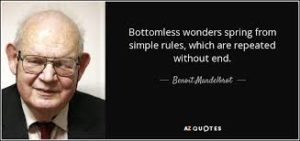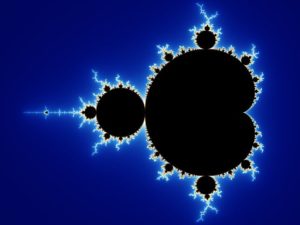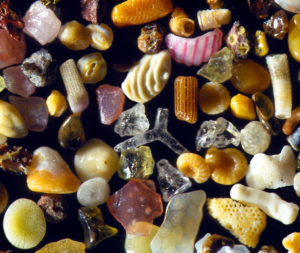 Patterns are models, or plans, used to produce nearly perfect copies of a specific design. In fact, the ability to discern a pattern from raw data is usually considered an indicator of advanced intelligence.
Patterns are models, or plans, used to produce nearly perfect copies of a specific design. In fact, the ability to discern a pattern from raw data is usually considered an indicator of advanced intelligence.
Some scientists (who happen to be avowed atheists, and curiously not agnostic) will argue that when words like “models”, “plans”, and “design” are used to describe an organic, natural process, those words don’t mean what they would ordinarily mean. These experts also claim the appearance of design in a living organism is nothing more than an overwhelmingly convincing optical illusion.
In his book The Greatest Show on Earth: The Evidence for Evolution, biologist (and renowned atheist) Richard Dawkins wrote,
Perhaps it was religious indoctrination that held us back (from believing in evolution). Or perhaps it was the daunting complexity of a living organ such as an eye, freighted as it is with the beguiling illusion of design by a master engineer.
Why does Mr. Dawkins believe that our eyes have deceived us, and the intuitively obvious appearance of design in our bodies only an illusion? It’s because he perceives design flaws in the human eye, probably due to the fact that the photoreceptor cells in the retina are allegedly placed backward. Dawkins has also been quite adamant about his belief that the vas deferens tube in humans and the laryngeal nerve in a giraffe are also examples of “poor” design which, as this website suggests, commits the logical fallacy of personal incredulity.
This argument of Dawkins depends upon our making the assumption that a creator God could not, or would not, create an imperfect organism. We must trust that his ideas about “improving” the current design of a human being or a giraffe would actually be an improvement over what ordinarily works pretty well as-is, because he said so. We should trust that any personal bias toward atheism will not affect his “careful conjecture” and conclusions reached after studying the available evidence: the fossil record, comparative anatomy, and DNA analysis.
Dawkins suggests that any previously-held strong beliefs in creationism should be shattered by his “overwhelming” evidence for evolution, conveniently ignoring this one very important and obvious fact: creation (by God or good luck) must precede evolution, even if we assume that all of his claims about evolution are true.
Simply stated, life cannot evolve until it exists.
Do patterns exist that are the product of “unintentional” design? Some would say yes. But isn’t the very idea of an “accidental design” an oxymoron? Does the inference of “bad” design actually prove that no design was involved at all?
Born in Poland, French-American mathematician Benoit Mandelbrot discovered that geometric patterns occurred in nature which could be expressed in mathematical terms, regardless of scale that he called fractals.
While discussing Mandelbrot’s work, Dr. Ian Stewart said:
The same mathematics is generating chaotic behavior and pattern behavior. This changes completely how you think about all of this. The idea that there are regularities in nature and then totally separate from them are irregularities is just not true. These are two ends of one spectrum of behavior which can be generated by the same kind of mathematics. And it’s the closest thing we have at the moment to the kind of true mathematics of nature.

The “Thumbprint of God”
Of course, Mandelbrot’s fractals aren’t the only repetitive patterns seen ubiquitously throughout nature.
There are also Fibonacci’s spirals, sometimes called the “fingerprints of God”, found in things as small as a human fingerprint (and smaller) up to the formation of galaxies.
The Mandelbrot set has also been called “the thumbprint of God” because with Fibonacci’s spirals, the repeated patterns across a broad spectrum of natural objects strongly imply the work of an intelligent designer.
Dr. Andrea Sella said,
I think one of the great take-home messages from Turing’s work and from the discoveries in chemistry and biology and so on, is that ultimately pattern behavior seems to be woven very, very deeply into the fabric of the universe. And it actually takes some very simple and familiar processes like diffusion, like the rates of chemical reactions, and the interplay between them naturally gives rise to pattern. So pattern is everywhere, just waiting to happen.
Does order emerge from chaos by accident, and not by design? Did the universe have a choice except to exist, and to create life from inanimate matter?
 To see what I’ve called “the Big Picture” in my book Counterargument for God, we must look at everything from the Big Bang to natural selection. We must learn what the experts think they know about abiogenesis and speciation, and to contemplate the significance of Fibonacci’s spirals, Mandelbrot’s fractals, and the incredible complexity of DNA.
To see what I’ve called “the Big Picture” in my book Counterargument for God, we must look at everything from the Big Bang to natural selection. We must learn what the experts think they know about abiogenesis and speciation, and to contemplate the significance of Fibonacci’s spirals, Mandelbrot’s fractals, and the incredible complexity of DNA.
Cosmology, chemistry, genetics and geometry will all factor in the development of a better understanding of how we came to exist, leaving us to contemplate the question of why we came to be. The evidence for design begins with the precise values of cosmological factors necessary for the success of the Big Bang and the anthropic universe, as well as inflation. The chemical elixir that facilitated the origin of life did not brew itself in a warm, shallow pond, as advocates of Darwin believe — cells cannot be formed without enzymes, so the existence of enzymes had to precede the first cell.
Too many things must “accidentally” happen with perfect timing in proper sequence in order to answer an existential question without invoking a supernatural creator even remotely plausible: the origin of matter via the Big Bang, after an unbelievably precise calibration of cosmological factors, followed by a perfectly timed period of accelerated expansion (called inflation) that together allowed the universe that exists today, to exist today. For this “fine-tuned” universe to exist without divine intervention of any sort, the perfect blend of chemicals had to have coalesced and reacted until enzymes and cell membrane formed in preparation for the self-organization of LUCA, the first living single-celled organism.
Even grains of sand are fractals.

beach sand from Maui, magnified 300x (photograph by Dr. Gary Greenberg)
Have you ever looked at sand under a microscope? Nothing to be ashamed about, I haven’t either — but Dr. Gary Greenberg has, and he took photographs, which can be seen in this amazing TED talk video.
You can see an individual heart cell beat, and watch as an immune cell consumes bacteria. Those two cells look nothing alike, but if both come from the same organism, they have the same DNA. Watching live cells in action is even more impressive than looking at beach sand from Maui under a microscope.
The primary reason for my interest in Mandelbrot’s work on fractals is the idea that complex structures may develop from a simple set of rules. My personal belief is that DNA can be viewed as organic source code which uses a very simple pattern of a four value sequence in rigidly structured and organized patterns. Obviously, patterns exist. They are ubiquitous. Order is in everything. You only have to see it.
Unless (as atheists often claim about intelligent design) patterns and order are nothing but an illusion.

Speak Your Mind